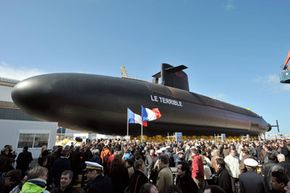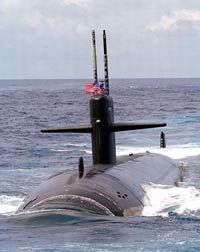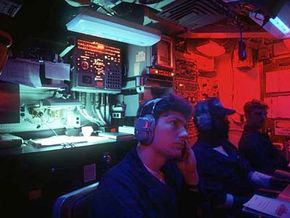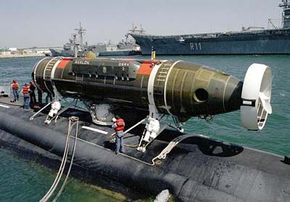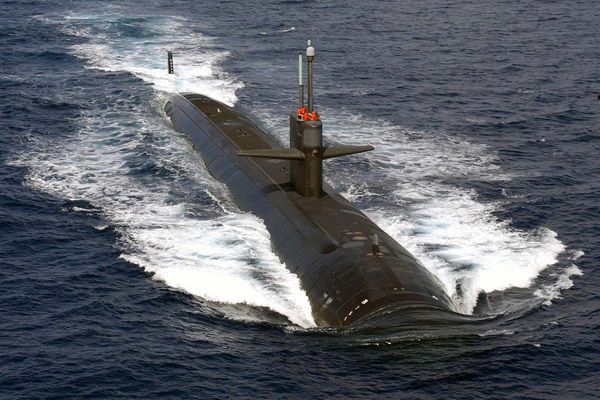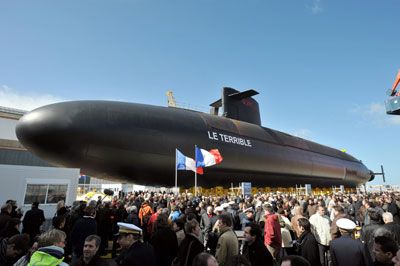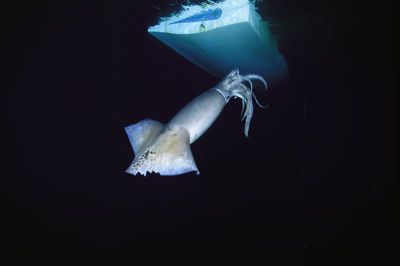There are three main problems of life support in the closed environment of submarine:
- Maintaining the air quality
- Maintaining a fresh water supply
- Maintaining temperature
Maintaining the Air Quality
The air we breathe is made up of significant quantities of four gases:
- Nitrogen (78 percent)
- Oxygen (21 percent)
- Argon (0.94 percent)
- Carbon dioxide (0.04 percent)
When we breathe in air, our bodies consume its oxygen and convert it to carbon dioxide. Exhaled air contains about 4.5 percent carbon dioxide. Our bodies do not do anything with nitrogen or argon. A submarine is a sealed container that contains people and a limited supply of air. There are three things that must happen in order to keep air in a submarine breathable:
- Oxygen has to be replenished as it is consumed. If the percentage of oxygen in the air falls too low, a person suffocates.
- Carbon dioxide must be removed from the air. As the concentration of carbon dioxide rises, it becomes a toxin.
- The moisture that we exhale in our breath must be removed.
Oxygen is supplied either from pressurized tanks, an oxygen generator (which can form oxygen from the electrolysis of water) or some sort of "oxygen canister" that releases oxygen by a very hot chemical reaction. (You may remember these canisters because of their problems on the MIR space station -- see this page for details). Oxygen is either released continuously by a computerized system that senses the percentage of oxygen in the air, or it is released in batches periodically through the day.
Carbon dioxide can be removed from the air chemically using soda lime (sodium hydroxide and calcium hydroxide) in devices called scrubbers. The carbon dioxide is trapped in the soda lime by a chemical reaction and removed from the air. Other similar reactions can accomplish the same goal.
The moisture can be removed by a dehumidifier or by chemicals. This prevents it from condensing on the walls and equipment inside the ship.
In addition, other gases such as carbon monoxide or hydrogen, which are generated by equipment and cigarette smoke, can be removed by burners. Finally, filters are used to remove particulates, dirt and dust from the air.
Maintaining a Fresh Water Supply
Most submarines have a distillation apparatus that can take in seawater and produce fresh water. The distillation plant heats the seawater to water vapor, which removes the salts, and then cools the water vapor into a collecting tank of fresh water. The distillation plant on some submarines can produce 10,000 to 40,000 gallons (38,000 - 150,000 liters) of fresh water per day. This water is used mainly for cooling electronic equipment (such as computers and navigation equipment) and for supporting the crew (for example, drinking, cooking and personal hygiene).
Maintaining Temperature
The temperature of the ocean surrounding the submarine is typically 39 degrees Fahrenheit (4 degrees Celsius). The metal of the submarine conducts internal heat to the surrounding water. So, submarines must be electrically heated to maintain a comfortable temperature for the crew. The electrical power for the heaters comes from the nuclear reactor, diesel engine, or batteries (emergency).
